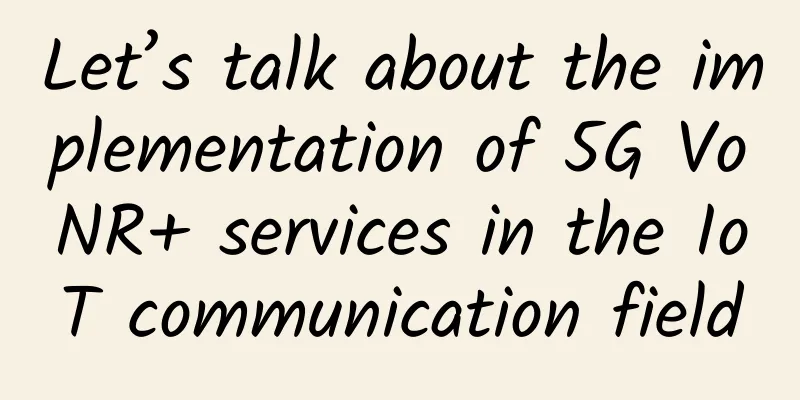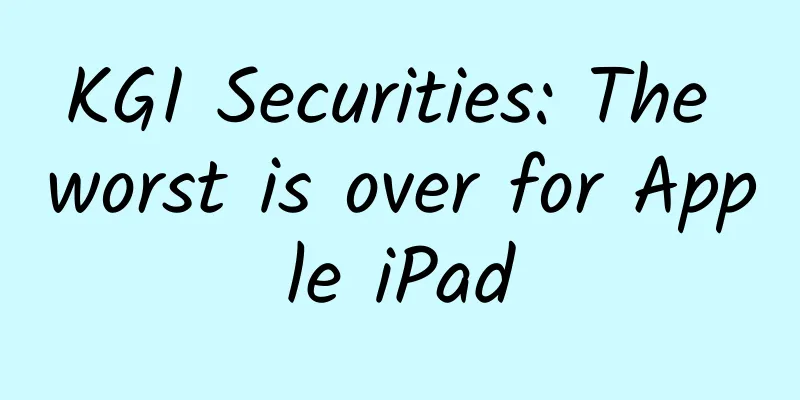Let’s talk about the implementation of 5G VoNR+ services in the IoT communication field

1. OverviewTraditional real-time audio and video communications meet the most basic information communication needs of nearly 7 billion people in the world, and are an indispensable basic service and one of the development priorities of operators. With the large-scale deployment of 5G networks and the commercialization of new VoNR services, the large bandwidth and low latency characteristics of 5G and 5G-Advanced provide a solid network foundation for upgrading high-definition audio and video communications to interactive, immersive ultra-clear audio and video communications. Under the 5G-Advanced architecture, the VoNR network will evolve to the VoNR+ network. Based on the VoNR+ technology, 5G new calls will give rise to more business forms and application scenarios, bringing users a richer business experience, such as intelligent translation, fun calls, screen sharing, and home terminal interaction. China Mobile's Smart Home Operation Center is actively exploring innovative application scenarios of VoNR+ technology in IoT control and multi-screen interaction, aiming to extend the new 5G VoNR+ service to smart homes and IoT ecosystems, and help VoNR+ services be fully commercialized to generate greater value. 2. What is 5G VoNR+5G VoNR, or 5G Voice over New Radio, is an end-to-end ultra-high-definition video and innovative value-added service solution provided by operators based on 5G access and existing IMS networks. Under this solution, audio and video calls support switching back and forth between VoNR and VoLTE networks, that is, the system will decide whether the audio and video call needs to be switched to the 5G or 4G network based on the measurement data reported by the UE to ensure the continuity and uninterruptedness of the audio and video call. 5G VoNR+ refers to the use of a new data transmission channel DC (Data Channel) based on 5G VoNR multimedia real-time communication, providing users with richer real-time interactive services in addition to ultra-high-definition video and voice services, and establishing a unified and open network architecture centered on the multimedia real-time communication capability platform, so as to achieve agile development and rapid deployment of innovative services on the basis of compatibility with existing services. The enhanced service capabilities provided by 5G VoNR+ will further extend the communication senses between people and open a new era of multimedia real-time communication between people, people and things, and things and things. 3. 5G VoNR+ key technical capabilities3.1 Key technical capabilities of the platform
In order to support a visual and fully interactive service experience and to be open and scalable for new services and technologies, the 5G new call platform introduces VoNR+ network capabilities based on the existing IMS audio and video communication network, providing a flexible network infrastructure base for rich interactive scenarios in the future. IMS is compatible with existing network capabilities (such as call event notification, call control, media control, media negotiation, etc.), and is upgraded to support IMS data channels, which can transmit any type of data in the data channel. Combining IMS basic audio and video communication capabilities and the newly added data channel negotiation capabilities, VoNR+ network capabilities can complete the triggering and call control of new call applications, and help new call applications complete data channel negotiation and audio and video communication media anchoring.
The 5G new call platform adds VoNR+ media plane, which provides a rich cloud audio and video media engine for 5G new calls, supporting multiple media processing and rendering capabilities such as media forwarding service capabilities, audio and video processing capabilities, data channel access capabilities, media plane authentication capabilities, AR/VR processing capabilities, and AI processing capabilities. At the same time, it supports dynamic expansion of external capability engines, provides capability scheduling engines, risk control detection, operation and maintenance monitoring, resource management and other capabilities, and supports the rapid access and launch of internal and external capabilities.
To ensure the operability and manageability of the business, the 5G new call platform should provide unified and convenient application introduction and operation capabilities, and support full life cycle management such as rapid access and flexible iteration of various new call applications such as operators' own applications, industry applications and third-party applications. Unified network architecture diagram 3.2 Key technical capabilities of terminalsVoNR terminals can provide visualization services based on ultra-high-definition video calls, and need to support the new generation of voice codec EVS and support negotiation to ultra-high-definition video calls. With the continuous development of 5G new call services, 5G terminals need to be further upgraded to support VoNR+ capabilities, providing the ability to interact with various types of data between the cloud and users, and between users in real time, to meet the needs of a new interactive service experience for new calls.
In order to meet the requirements of the new 5G VoNR+ service: (1) The terminal's audio and video communication protocol stack needs to be upgraded to support the 3GPP TS26.114 DCMTSI client capability and establish the IMS DC data channel through the SDP negotiation mechanism; (2) The terminal should support opening the IMS data channel interface to the application layer, making the IMS data channel a new industry application entrance at the application layer to strengthen the industry application ecosystem of the operator's audio and video communication; (3) Based on Web technology and JS scripts, the terminal should support the web engine to process the service data of the data channel in real time and present it on the user UI interface in real time, so as to realize flexible interface display customized by applications and networks and reduce the cumbersome customization demands on the terminal side; (4) The terminal should support negotiation of QoS indicators such as service bandwidth, latency and packet loss rate according to the reliability requirements of interactive services.
In terms of technical architecture design, the VoNR+ terminal follows two core concepts: one is the decoupling of terminal communication capabilities and application capabilities; the other is the use of Internet Web technology to provide various innovative applications for 5G new calls, namely the "New Call Mini Program". The application interface is developed using HTML and CSS languages to display pages, the business logic is implemented using JavaScript, and the API interface provided by the new call application running environment is called to implement the underlying function calls. VoNR+ terminal architecture diagram Therefore, the VoNR+ terminal provides a new application framework. That is, operators build an open application platform to allow enterprises and developers to enter in the form of mini-programs. By combining native call applications and new call mini-program applications, a new 5G new call ecosystem is created for enterprises and developers, and a win-win industrial ecosystem is jointly built. 4. 5G VoNR+ implementation solutions in IoT communicationsAt present, the platform transformation of 5G VoNR+ related services has been basically completed. China Mobile is working with Huawei, ZTE, vivo and other manufacturers to carry out VoNR+ testing in some provinces. At present, the chips and mobile phones that cooperate with the testing of VoNR+ have been basically developed and are undergoing final version testing. In order to realize the official commercial use of VoNR+ services and give full play to the maximum value of networks and technologies, it is necessary to further promote ecological partners such as chips and mobile phones to launch commercial versions of mobile terminals that meet VoNR+ standards and specifications, and build a relatively complete terminal ecosystem. In order to better promote the new VoNR+ service, China Mobile Smart Home Operation Center, based on the operator's unique capabilities, actively explores new VoNR+ services and new scenarios, and proposes a DTMF-based IoT terminal remote control solution and an IMS DC-based IoT terminal remote control solution based on the IoT multimedia communication AIoTel (AIoT+Telephony) technology system. It is committed to achieving the goal of controlling all terminals with one mobile phone and helping hundreds of millions of families enter the era of intelligence. Intelligent Internet of Things Multimedia Communication Technology (AIoTel) System Diagram AIoTel system framework diagram 4.1 IoT terminal remote control solution based on DTMFThis solution is based on the AIoTel technology in smart home operations, and software defines the 5G VoNR ultra-high-definition video communication module. That is, the IoT terminal does not need to integrate the 5G communication module, but only needs to integrate the Hejia Smart Talk AIoTel SDK and connect to the Hejia Smart Talk AIoTel capability platform to achieve VoNR ultra-high-definition video calls with 5G mobile phones. After the device and the 5G mobile phone establish an ultra-high-definition video channel, the 5G mobile phone can control the IoT terminal through the DTMF buttons. The interaction process is shown in the figure below. After the IoT terminal and the 5G mobile phone establish 5G VoNR ultra-high-definition video communication, the mobile phone clicks the DTMF button, and the button information will be transmitted to the Hejia Smart Talk capability platform through the audio channel. After receiving the DTMF button information, the capability platform will convert it into a control signal and send it to the IoT terminal. After the terminal AIoTel SDK receives the control signal sent by the capability platform, it will call back to the upper-level application, and the upper-level application will implement the corresponding control function according to the control protocol. 4.2 IoT remote device control solution based on IMS DCAccording to the requirements of VoNR+ terminals, VoNR+ terminals must support the negotiation and creation of data channels. In order to simplify the implementation complexity of IoT terminals and reduce the access costs of terminal manufacturers, the Smart Home Operation Center proposed an IMS DC data channel de-terminalization solution based on the 4.1 solution, that is, IoT terminals do not need to implement the relevant requirements of VoNR+ terminals, and the implementation details of the data channel are moved to the Hejia Smart Talk Platform. The platform is responsible for negotiating and creating data channels with the core network, and parsing and forwarding data in the data channel. The IoT terminal can communicate with the mobile terminal for VoNR+ without any modification, achieving seamless access. The interaction process is shown in the figure below. After the IoT terminal and the 5G mobile phone establish 5G VoNR+ ultra-high-definition video communication, the user clicks the 5G new call button on the mobile phone call interface in turn to enter the mini-program list interface, clicks the Hejiaqin mini-program button to enter the Hejiaqin interface, clicks the remote control device button to enter the remote control device interface, and finally clicks the corresponding device button to enter the corresponding device control interface to realize the remote device control function. 5. Summary and OutlookThe new 5G call service will inject innovative vitality into the communications industry and bring a new user experience to users. Looking ahead, VoNR+ will be a breakthrough for basic communications services to move towards new holographic immersive interactive communications services. In the future, AR, AI and other technologies will be gradually introduced to continuously extend the reach of VoNR+ to a wider range of industry applications such as telemedicine and distance education. China Mobile's Smart Home Operation Center will also continue to deepen the application of 5G VoNR+ new services in the smart home and IoT ecosystem. |
>>: Google's new rules: Android apps must allow users to freely delete accounts and data
Recommend
Gehua Xiaoguo TV Box: One box is equivalent to two boxes in the past, with 140 sets of live TV + iQiyi smart on-demand
The TV cabinet at home is always messy and cannot...
Taiye Hand-painted Employment Improvement Class will end in January 2021 [HD quality with materials]
Taiye Hand-painted Employment Improvement Class w...
I created more than 10,000 titles a year. I summarized 9 rules for titles that will make users remember them.
I have been engaged in new media operations for m...
How does Kuaishou get high traffic? Analysis of the increase in followers of Kuaishou videos
In November 2012, Kuaishou transformed from a pur...
4 Steps to Solve Advertising Difficulties, Analysis of Advertising Strategies in the Wedding Photography Industry
Target: A national wedding photography chain clie...
Android also has its own "Shortcuts" app
Since iOS12, an additional app called "Short...
Strategy Analytics: Automotive, transportation, logistics and IoT will drive growth in the location sector in 2020
Here maintains leadership in location-based platf...
Can the human body be directly exposed to space?
With the development of aerospace technology, Chi...
Second category e-commerce marketing tips, save it!
There is only one day left for the National Day h...
The most comprehensive Android app market free resource application details in history!
This is the most comprehensive guide to applying ...
Practical Tips | 4 steps to create a copywriting title that doubles the readership!
How should the title be written? What psychologic...
8 Marketing Trends Predicted for 2018
I believe you have been annoyed by the "case...
Using data to interpret "Ode to Joy 2" from all angles
As a data analysis enthusiast, the author of this...
An example analysis of Tieba user operation strategy!
User stratification refers to the purposeful form...
How do bees train themselves to become "engineering students"? | Science Museum
As the temperature continues to rise, The atmosph...









